Gold's curse triggered after $3357: Historical data reveals the encryption law that Bitcoin will break new highs within 5 months

Reprinted from panewslab
04/19/2025·9DAuthor: Lawrence
In April 2025, the price of Bitcoin continued to fluctuate between the $83,000 and $85,200 range, failing to break through the key resistance level of $86,000. This price fluctuation is closely related to subtle changes in macroeconomic data.

Data on the number of applicants for unemployment benefits in the United States.
On April 17, the U.S. Department of Labor announced the initial unemployment benefits of 215,000, lower than the market expectations of 225,000, indicating that the labor market remains resilient. This data is seen as an important signal of US economic stability, but it also reduces market expectations of the Federal Reserve's interest rate cut, thus curbing short-term speculative sentiment in risky assets.
In his speech on April 16, Federal Reserve Chairman Powell emphasized that the recent "reciprocal tariff" policy implemented by the United States far exceeds expectations, which may lead to the double pressure of rising inflation and slowing economic growth.
Meanwhile, Trump said at a press conference: "I think he (Powell) is bad, but I can't complain," noting that the economy was strong during his first term. Trump then continued to complain about Powell, saying he thought the Fed chairman was "playing with politics" and said Powell was "a person I never liked much."
Trump then said: I think Powell will cut interest rates sooner or later, and the only thing Powell is good at is rate cuts.
Although the Fed made it clear that it would not interfere with the market or implement interest rate cuts, the ECB has taken the lead in lowering interest rates from 2.50% to 2.25%, a new low since the end of 2022, trying to ease the impact of tariff policies on the economy. This differentiation of global monetary policy further aggravates market uncertainty and prompts investors to reevaluate the hedging attributes of assets such as Bitcoin.
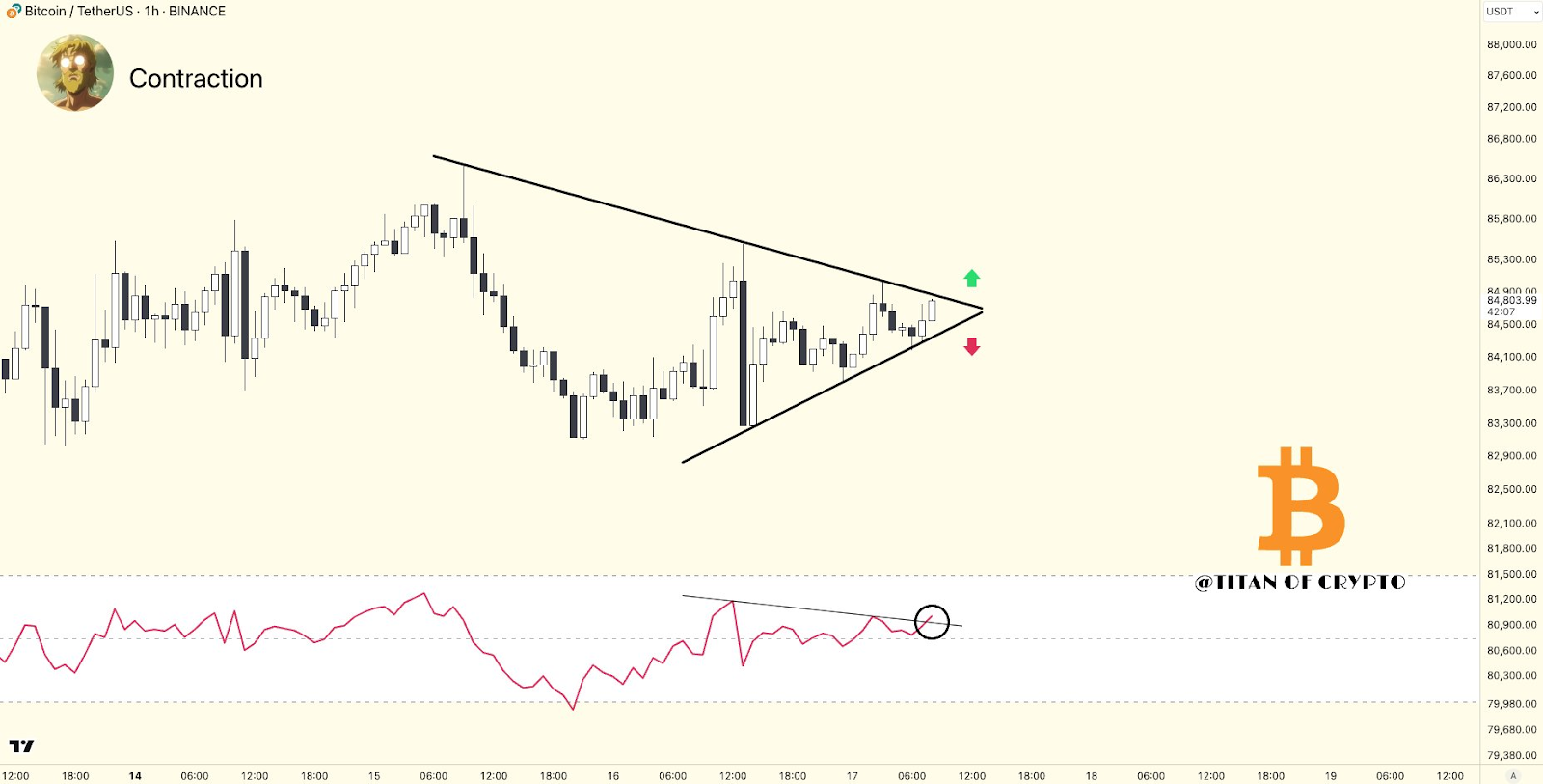
From a technical perspective, Bitcoin is at a critical "turning point". Anonymous trader Titan of Crypto pointed out that BTC prices continue to shrink within the triangle pattern, with the RSI indicator above 50 and trying to break through the resistance level, suggesting a directional breakthrough is coming. Order flow analyst Magus believes that if Bitcoin cannot break through $85,000 as soon as possible, the long-term chart may turn bearish. The competition for this price range is not only about short-term trends, but also may determine whether Bitcoin can continue the bull market since 2024.
Historical Relationship: Bitcoin Lag Effect after Gold High
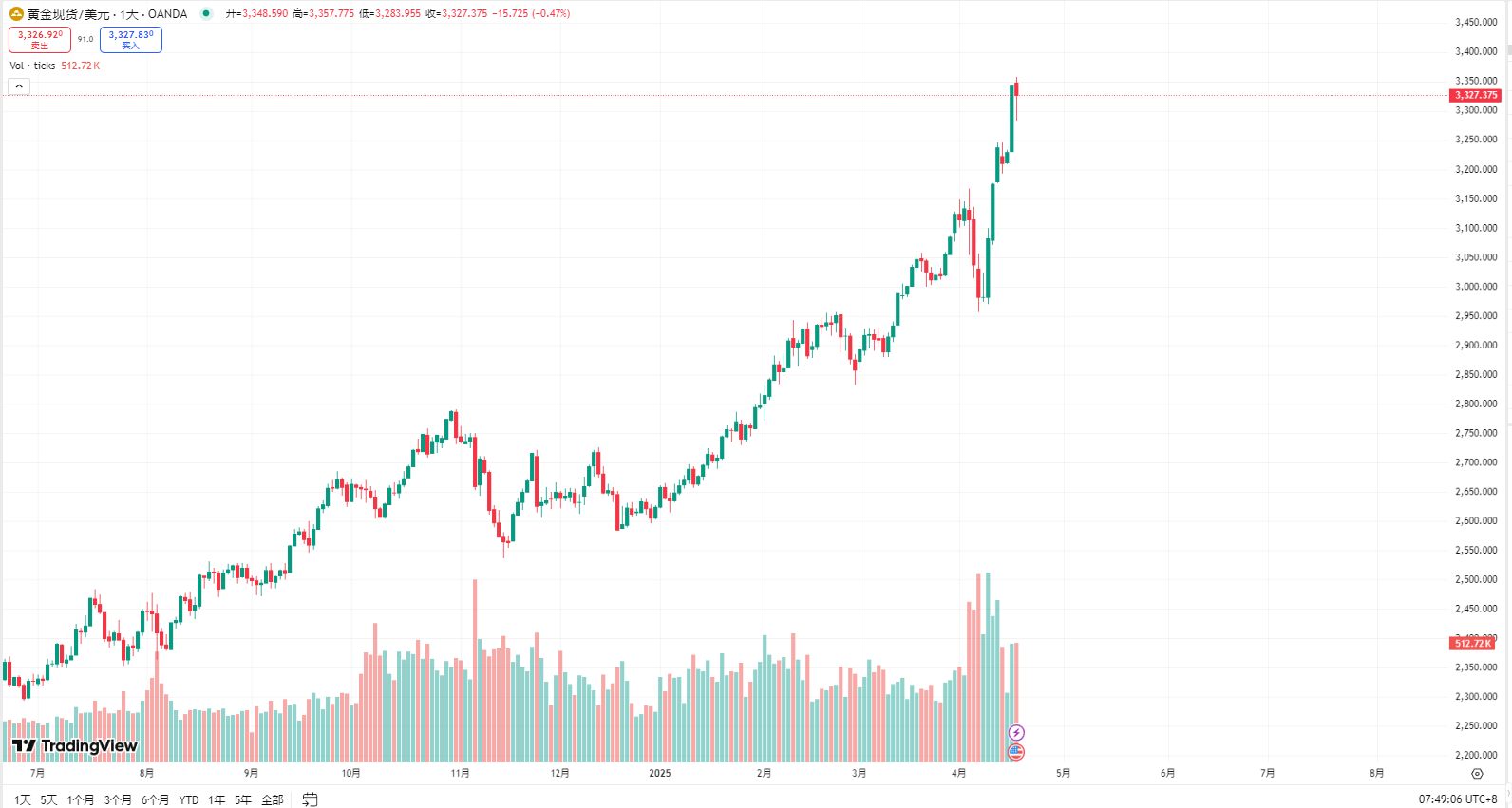
On April 17, gold prices soared to an all-time high of $3,357 per ounce, a phenomenon that has attracted widespread attention from the subsequent trend of Bitcoin.
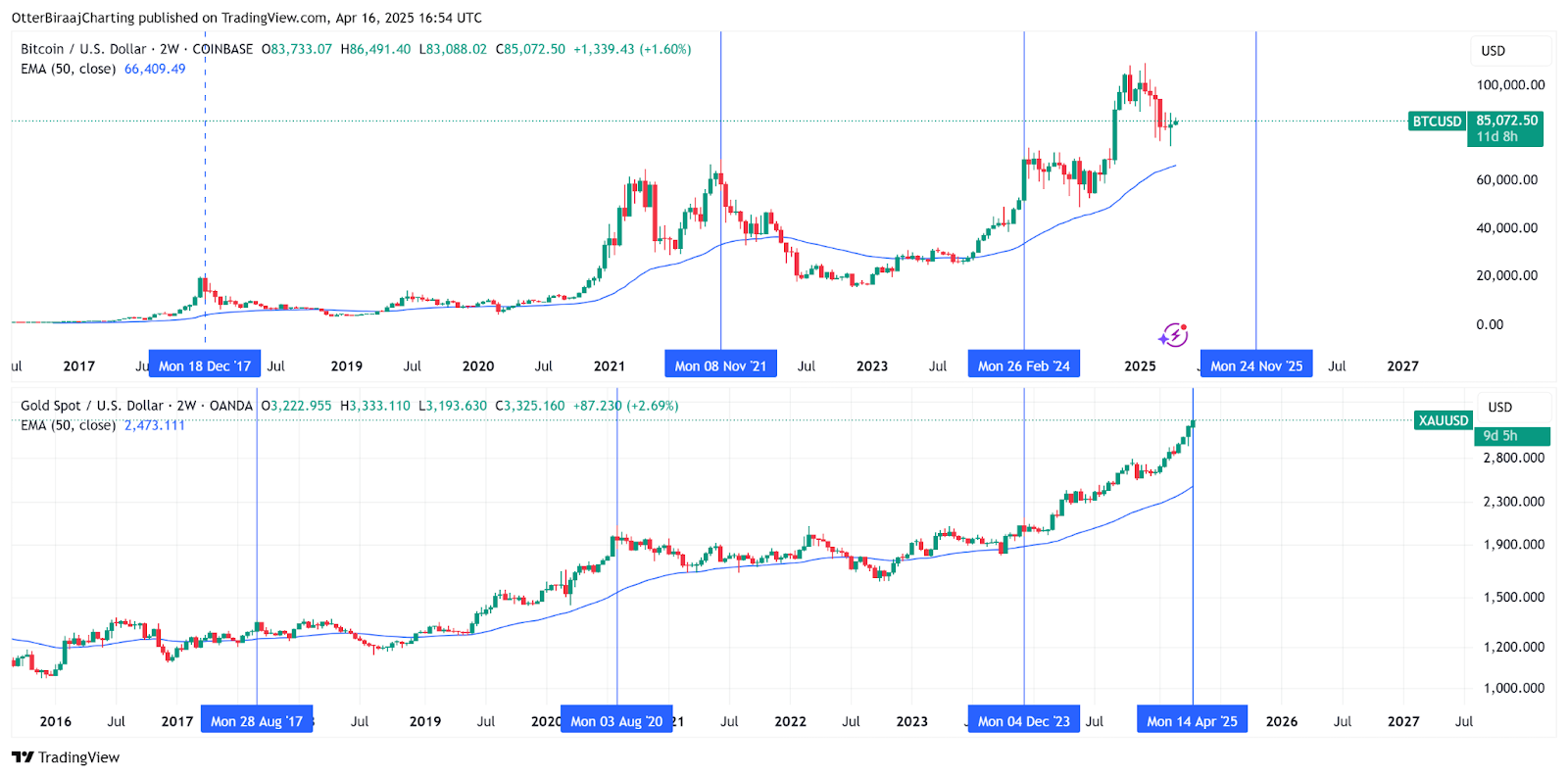
Comparison of historical trends between Bitcoin and gold.
Historical data show that there is a significant lag correlation between gold and Bitcoin: Whenever gold hits a new high, Bitcoin usually follows up and breaks through the previous high in 100-150 days.
For example, after gold rose 30% in 2017, Bitcoin hit a historical peak of $19,120 in December of the same year; after gold broke through $2,075 in 2020, Bitcoin rose to $69,000 in November 2021.
This correlation stems from the complementary roles of the two in times of economic uncertainty. As a traditional safe-haven asset, gold usually takes the lead in reflecting inflation expectations and monetary easing signals; while Bitcoin has become a latecomer under the "digital gold" narrative due to its rigid supply and decentralized characteristics.

The correlation between Bitcoin and gold price trends.
Joe Consorti, the head of growth at Theya, pointed out that Bitcoin’s lag against the gold trend is related to its market maturity—it takes longer for institutional investors to complete the allocation conversion from traditional assets to crypto assets.
Currently, the soaring gold price resonates with the uncertainty of the Federal Reserve's policy.
Galaxy Digital CEO Mike Novogratz called this stage the "Minsky moment" of the U.S. economy, the critical point of unsustainability in debt and collapse of market confidence. He believes that the synchronous strengthening of Bitcoin and gold reflects investors' concerns about the weakening of the US dollar and the 35 trillion national debt, while tariffs have exacerbated the turbulence in the global economic order.
Cyclical Model and Long-term Prediction: Bitcoin’s “power law curve” and
$400,000 target
Despite the short-term volatility, analysts remain optimistic about Bitcoin’s long-term prospects. Anonymous analyst apsk32 predicts that Bitcoin will enter a parabolic growth stage in the second half of 2025, with a target price of up to $400,000.
The model standardizes Bitcoin market value with gold market value and measures Bitcoin value in gold ounces, revealing its potential valuation logic as "digital gold".
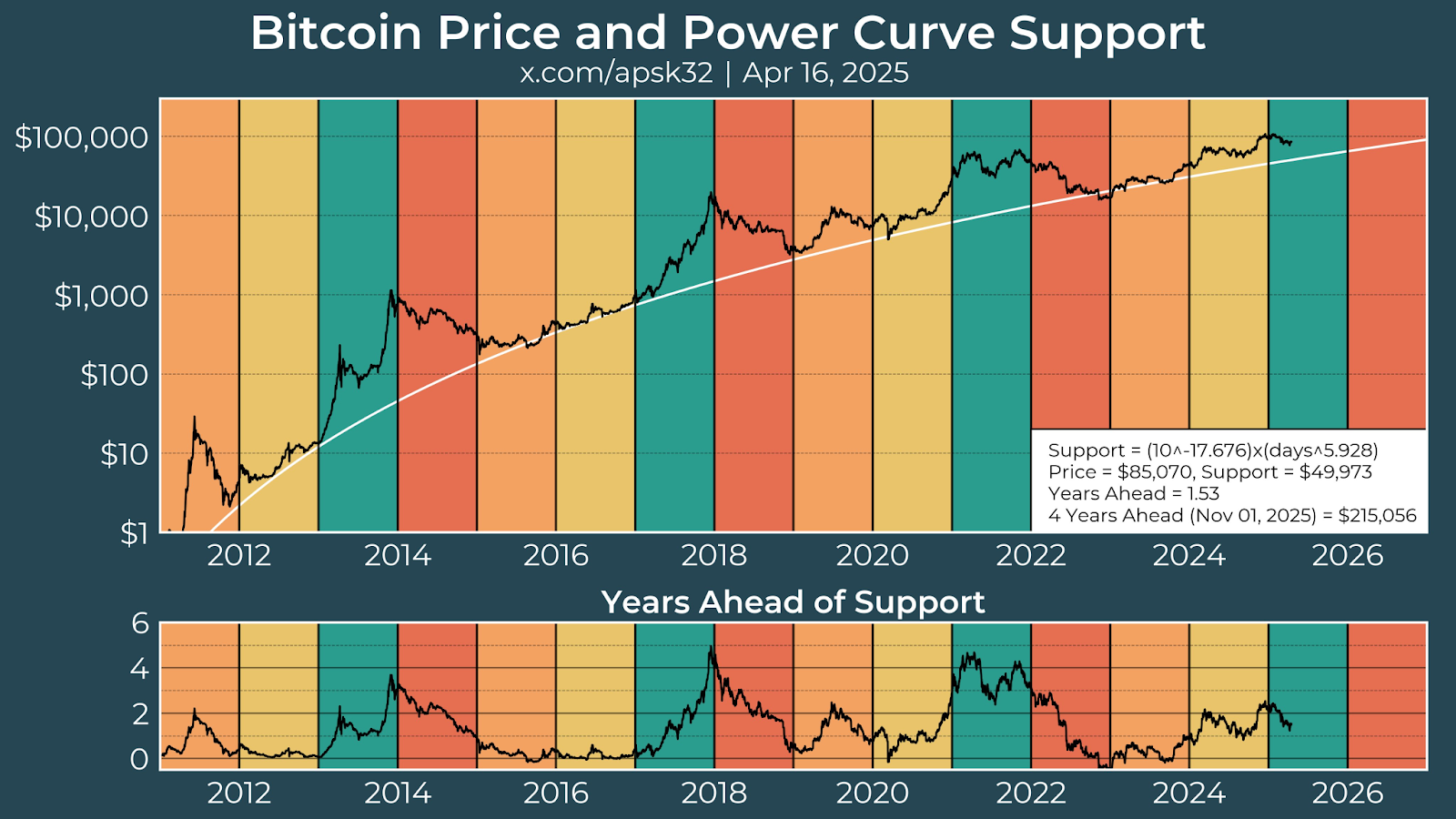
Bitcoin price and computing power curve chart.
The laws of historical cycles also provide support for this prediction. Bitcoin’s halving effect (once every four years) usually triggers a bull market within the next 12-18 months, while the halving event in April 2024 may show its power from the third to the fourth quarter of 2025.
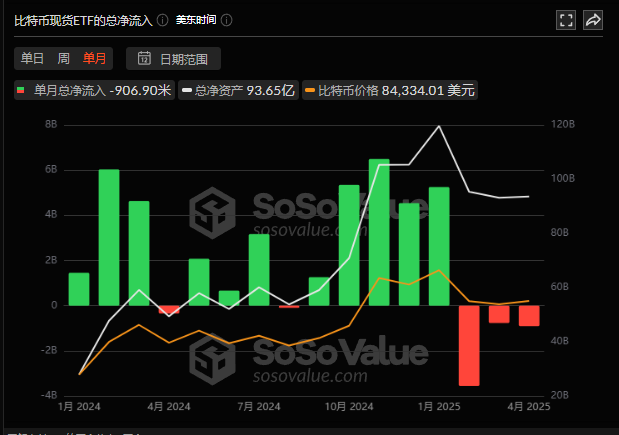
At the same time, institutional investors continue to increase their holdings of Bitcoin through compliance tools such as ETFs. As of February 2025, the total net asset value of BTC ETFs has reached US$93.6 billion, further consolidating its position as a mainstream asset.
However, the market also needs to be vigilant about the risk of "expected overdraft". The current bull market is mainly driven by institutional coin hoarding and ETF funds, retail investors' participation continues to be sluggish, exchange BTC balances have dropped to their lowest level since 2018, and liquidity trap risks have intensified. If Bitcoin fails to expand more application scenarios (such as payments and smart contracts), its valuation may face pullback pressure.
Policy variables: tariffs, liquidity crisis and market reconstruction
In April 2025, U.S. tariffs on goods against China soared to 104%, and countries such as Japan, Canada also faced high tariff shocks. This policy not only pushed up global inflation expectations, but also reshaped the capital flow pattern. Bloomberg data shows that tariffs have caused U.S. prices to rise by about 2.5%, and households' average annual spending has increased by nearly $4,000. In response to economic pressure, the Fed may be forced to restart quantitative easing, and the over-issuance of currency will further strengthen Bitcoin's anti-inflation narrative.
Tariff policies also highlight the decentralized advantages of Bitcoin. Against the backdrop of traditional cross-border payments, stablecoins (such as USDT) have become tools for emerging markets to avoid capital controls due to their low cost and instant settlement characteristics. For example, the premium rate of stablecoins in Argentina, Türkiye and other countries has remained at 5%-8% for a long time, reflecting the urgent demand under the fiat currency credit crisis.
However, short-term market fluctuations caused by tariffs cannot be ignored. On April 9, the price of Bitcoin fell to US$80,000, a day drop of 7%, and the derivatives market lost more than US$1 billion in a single day. This volatility shows that Bitcoin has not yet completely escaped from the label of "high-risk assets" and its price is still severely affected by macro sentiment and leverage liquidation.
Conclusion: The logic of asset allocation under the new economic paradigm
The core contradiction in the current market lies in the mismatch between policy expectations overdraft and endogenous momentum. The long-term value of Bitcoin depends on the dual test of regulatory framework and technical bottlenecks.
Investors need to be clear-headed that 2025-2026 may be the "last carnival" of Bitcoin.
In this change, the complementarity between gold and Bitcoin is becoming increasingly significant. With its historical consensus and liquidity advantages, gold is still the ultimate safe-haven choice in the crisis; while Bitcoin has verified its "Digital Gold 2.0" attribute through "decorrelation", becoming the core target of diversified investment portfolios.
For ordinary investors, allocating a combination of physical gold and mainstream cryptocurrencies and focusing on the "mistake killing opportunities" of emerging market bonds, or the best strategy to resist turmoil.
History will not be simply repeated, but it always rhymes. Whether it is Bitcoin’s $85,000 turning point or gold’s $3,357 high, these figures are behind them are microcosms of the reconstruction of the global economic order. Only by maintaining rationality and foresight can we capture new opportunities in uncertainty.


 chaincatcher
chaincatcher